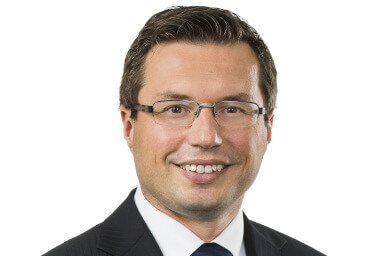Retirement
The sooner the better for school fee planning
With education costs running at double the level of inflation, planning ahead to pay school fees is a good idea, advises Jonathan Philpot.
The sooner the better for school fee planning
With education costs running at double the level of inflation, planning ahead to pay school fees is a good idea, advises Jonathan Philpot.

Education costs, particularly in the case of elite private schools, can consume a very large proportion of household disposable income.
Wherever possible, it makes sense to defray these costs by starting an education savings plans early, in the years before children even start school.
High school fees at private schools will set families back upwards of $30,000 a year, and that is before the costs of school uniforms, equipment, building fund levies and extra curricular activities are taken into account.
Education costs are not just an issue for those considering a private school. Other independent and Catholic schools can set you back thousands of dollars a year, and even public schooling comes at a cost that surprises many parents, with associated expenses of uniforms, equipment, camps, excursions and other extra curricular activities.

There are a number of ways to save for education costs, and different options will suit different investors. It all depends on each families’ individual circumstances.
Mortgage offset savings
From a tax and certainty of returns perspective it is hard to beat paying down the mortgage, with a view to drawing it back when needed to cover education costs.
The best approach is to hold these additional savings in a mortgage offset account.
They can generally be established so that the one mortgage can have multiple offset accounts, and one of these would be earmarked for education savings.
From a tax perspective this is the best outcome as families are reducing their non-deductible debt and, even in the current low interest rate environment, it is difficult to achieve an after tax investment return elsewhere that can match this result, with the same risk/return trade-off.
The biggest risk is accessibility. Discipline is required to ensure the funds earmarked for education savings, are not used for other purposes.
For this reason, some parents sometimes prefer other, more disciplined, investment options.
Invest in lowest earning spouse’s name
This option works well when the spouse on the lowest income is earning less than $80,000 a year –
that is, under the 37 per cent tax rate.
It is an even better option if the spouse earns less than $37,000 as investments made in the name of lowest earning spouse utilise the benefit of the lower tax rate.
The simplest way to implement this is to set up a regular savings plan to put away a certain dollar amount at regular intervals, and this is often done through a managed fund direct debit option.
Parents have the option to make regular investments into a diversified managed fund that will build with regular savings and investment earnings.
Education savings plans
Specially designed education savings plans solve the problem of accessibility. The restrictive nature of these investments means that the funds saved, and the associated tax breaks, can generally only be used for education purposes.
While this makes them an attractive option for some, some investors do not like being locked in to this limited use for funds.
They can be a useful investment option if both parents are earning incomes that are in the higher tax bracket. Those earning over $80,000 could find this a favourable investment choice.
Education savings plans have an inbuilt taxation rate that is capped at 30 percent and if the investments are held for 10 years or more that can be withdrawn without any further tax payable.
Grandparents
If retired grandparents have money parked within a superannuation structure, it can be a tax advantaged way to use some of these funds to help pay for their grandchildren’s education.
Those close to retirement may choose to make additional contributions to build up their superannuation balance, in a concessionally tax environment, with the aim of drawing this money out in retirement and contributing to their grandchildren’s education.
Jonathan Philpot, HLB Mann Judd Sydney

Retirement Planning
Majority of Australians still unsure about their retirement prospects
A recent survey conducted by MFS Investment Management® has shed light on the ongoing uncertainty faced by many Australians regarding their retirement plans. Despite a slight increase in confidence ...Read more

Retirement Planning
Wage growth steadies as businesses navigate economic challenges
In a sign that the Australian labour market may be finding equilibrium, wage growth has stabilised this quarter, according to Employment Hero's latest data. This development comes as employers ...Read more

Retirement Planning
Simplified retirement advice: Key to overcoming behavioural biases, experts say
In a bid to enhance retirement outcomes for Australians, a recent whitepaper by Industry Fund Services, in collaboration with Challenger, has highlighted the importance of simplifying retirement ...Read more

Retirement Planning
Rest launches Retire Ready digital experience to empower members approaching retirement
Rest, one of Australia’s largest profit-to-member superannuation funds, has unveiled a new digital experience aimed at making retirement preparation simpler and more personalised for its members. Read more

Retirement Planning
New Framework Aims to Bridge Australia’s Financial Advice Gap
A ground-breaking framework introduced by the Actuaries Institute promises to revolutionise how Australians access financial support, potentially transforming the financial wellbeing of millionsRead more

Retirement Planning
The downsizer dividend: how Australia’s ageing shift will reshape property, finance and AI strategy
Downsizing is moving from a personal milestone to a system-level lever for Australia’s housing market. As policymakers court reforms and agents eye fresh listings, the real profit pools will accrue to ...Read more

Retirement Planning
Half of Australians financially insecure about retirement as AMP launches new initiative
In a significant move aimed at addressing the retirement concerns of Australians, AMP has unveiled the Retirement Confidence Pulse, a national barometer designed to gauge the financial confidence of ...Read more

Retirement Planning
North introduces Grow to expand Australia's financial advice footprint
In a bid to bridge the gap between the demand for financial advice and its accessibility, North, a prominent platform for superannuation and retirement in Australia, has launched an innovative ...Read more

Retirement Planning
Majority of Australians still unsure about their retirement prospects
A recent survey conducted by MFS Investment Management® has shed light on the ongoing uncertainty faced by many Australians regarding their retirement plans. Despite a slight increase in confidence ...Read more

Retirement Planning
Wage growth steadies as businesses navigate economic challenges
In a sign that the Australian labour market may be finding equilibrium, wage growth has stabilised this quarter, according to Employment Hero's latest data. This development comes as employers ...Read more

Retirement Planning
Simplified retirement advice: Key to overcoming behavioural biases, experts say
In a bid to enhance retirement outcomes for Australians, a recent whitepaper by Industry Fund Services, in collaboration with Challenger, has highlighted the importance of simplifying retirement ...Read more

Retirement Planning
Rest launches Retire Ready digital experience to empower members approaching retirement
Rest, one of Australia’s largest profit-to-member superannuation funds, has unveiled a new digital experience aimed at making retirement preparation simpler and more personalised for its members. Read more

Retirement Planning
New Framework Aims to Bridge Australia’s Financial Advice Gap
A ground-breaking framework introduced by the Actuaries Institute promises to revolutionise how Australians access financial support, potentially transforming the financial wellbeing of millionsRead more

Retirement Planning
The downsizer dividend: how Australia’s ageing shift will reshape property, finance and AI strategy
Downsizing is moving from a personal milestone to a system-level lever for Australia’s housing market. As policymakers court reforms and agents eye fresh listings, the real profit pools will accrue to ...Read more

Retirement Planning
Half of Australians financially insecure about retirement as AMP launches new initiative
In a significant move aimed at addressing the retirement concerns of Australians, AMP has unveiled the Retirement Confidence Pulse, a national barometer designed to gauge the financial confidence of ...Read more

Retirement Planning
North introduces Grow to expand Australia's financial advice footprint
In a bid to bridge the gap between the demand for financial advice and its accessibility, North, a prominent platform for superannuation and retirement in Australia, has launched an innovative ...Read more








